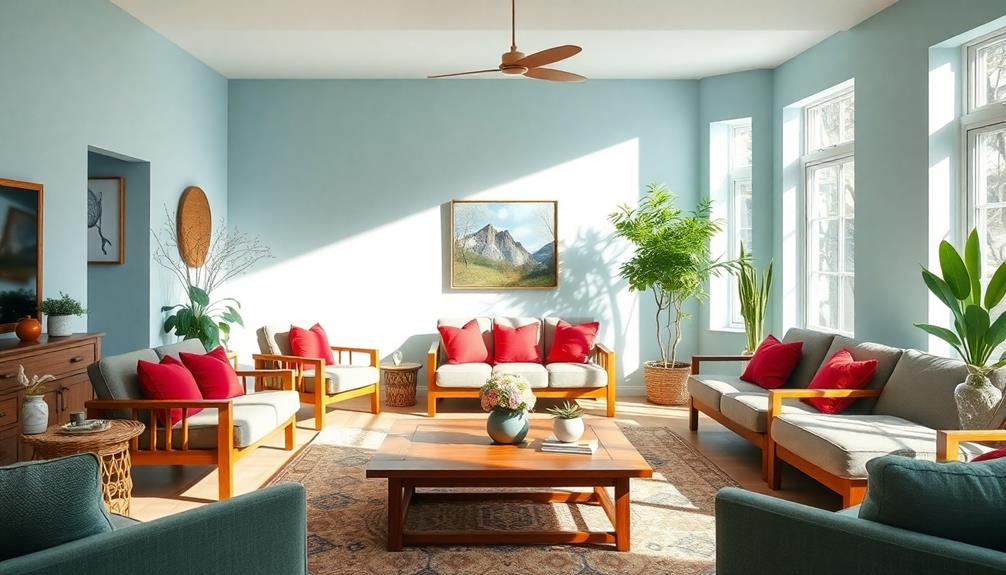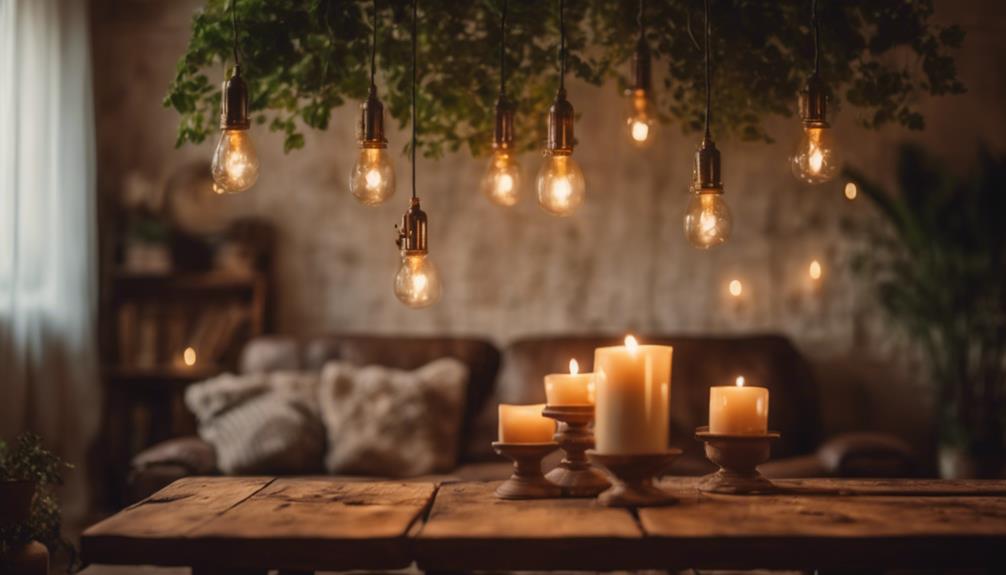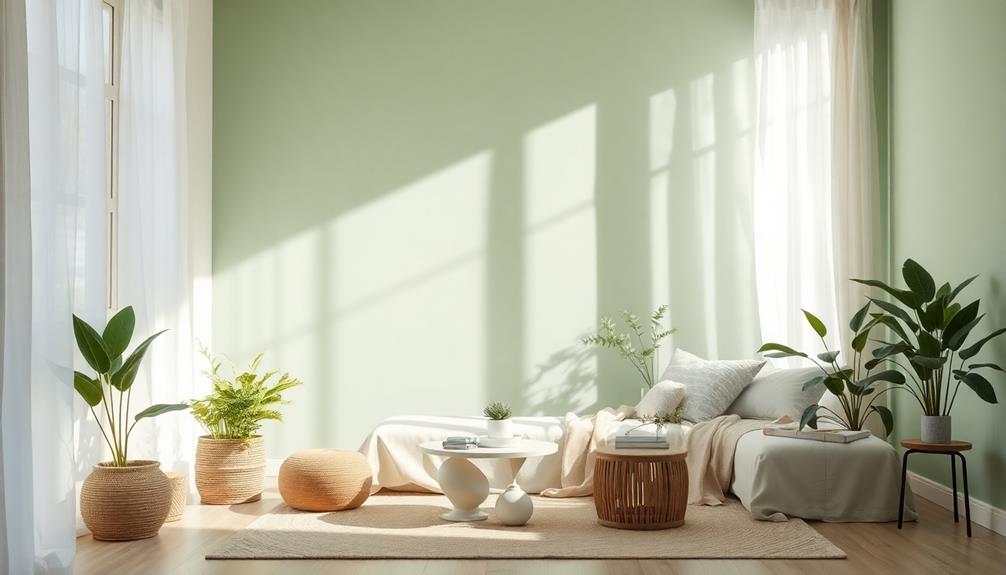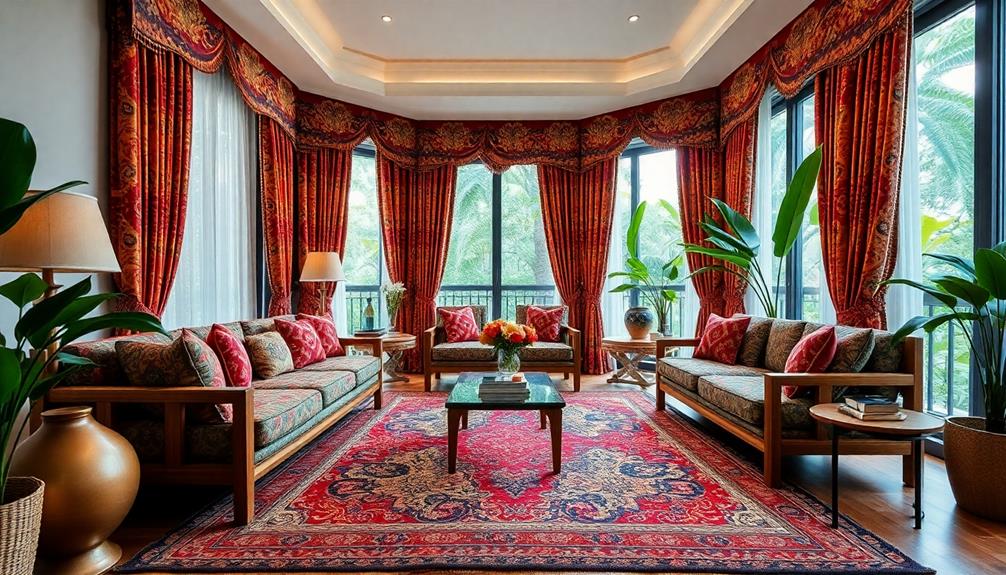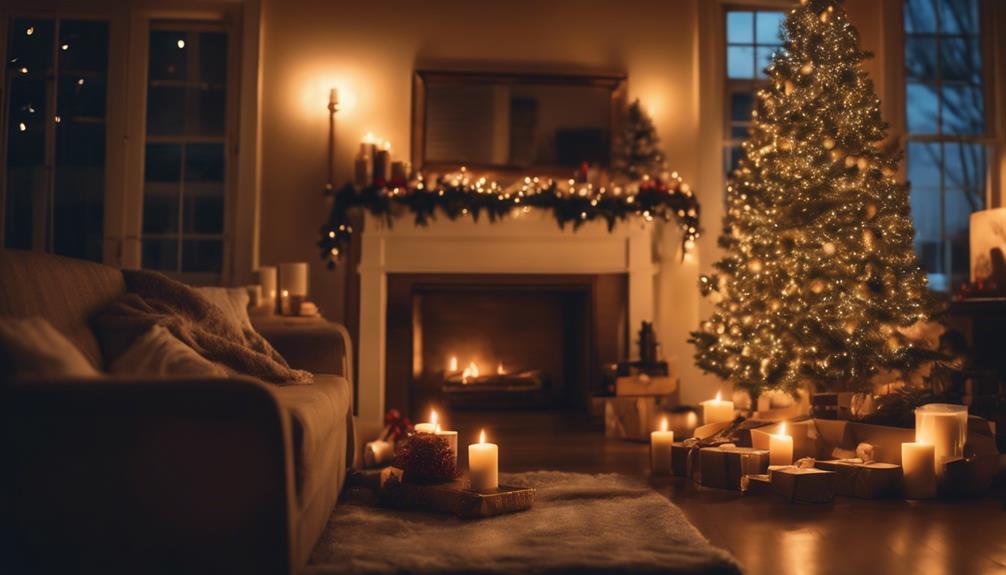Feng Shui colors can transform your home into a sanctuary of peace and balance. For bedrooms, opt for cool colors like blue and green to promote relaxation and reduce anxiety. In living areas, warm colors such as red and orange uplift energy and encourage social interaction. Kitchens thrive with energizing orange, while shades of yellow brighten up darker spaces. To maintain harmony, guarantee your color choices complement each other and fill no more than one-ninth of any room. Discovering the right mix of shades can enhance your home's energy flow, setting the stage for tranquility and well-being throughout your space. When incorporating feng shui color tips into your home, it’s important to consider not only the hues themselves but also the quality of light in each room. Natural light can enhance the effects of certain colors, so be mindful of how the sunlight interacts with your chosen hues throughout the day. Additionally, using accents and accessories in complementary colors can further amplify the positive energy in each space. By following these feng shui color tips, you can create a harmonious and balanced environment that promotes well-being and serenity in your home.
Key Takeaways
- Choose cool colors like blue and green for bedrooms to promote relaxation and calmness, enhancing sleep quality.
- Utilize warm colors such as red and yellow in living areas to create an inviting and energetic atmosphere for social interactions.
- Balance color usage by limiting any single color to no more than 1/9 of the space to maintain positive energy flow.
- Incorporate earthy tones with vibrant colors to strengthen connections and create a harmonious environment throughout your home.
- Consider the purpose of each room when selecting colors; different areas require varying color energies for optimal functionality.
Understanding Feng Shui and Color
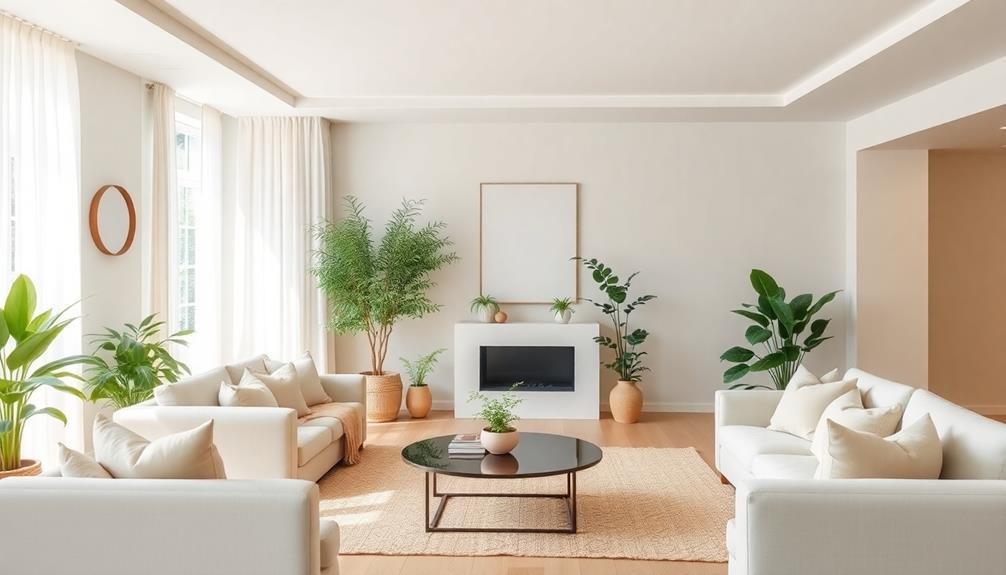
Feng Shui is all about creating harmony in your home, and color plays an essential role in that process. By understanding how different colors influence energy, you can enhance your living space's emotional atmosphere.
Each color corresponds to one of the five elements in Feng Shui—Water, Wood, Fire, Earth, and Metal—bringing unique meanings and effects on mood. Integrating natural materials and earth tones, as seen in Balinese design characteristics, can further enhance the calming effect of your chosen colors.
For example, blue and black represent Water, promoting calmness and serenity, making them perfect for bedrooms and bathrooms. Green symbolizes Wood, symbolizing growth and renewal, which can refresh your living areas.
Red and orange, representing Fire, invigorate and stimulate social interaction, making them ideal for communal spaces like living rooms and kitchens. Yellow, the color of Earth, offers warmth and stability, while white and metallic shades embody Metal, fostering clarity and organization.
It's essential to balance these colors in your home. Too much of any color can lead to chaos, while too little can create a lifeless atmosphere.
Thoughtful color selection in your interior design can greatly influence the energy flow, helping you achieve a more peaceful and harmonious living environment.
Effects of Warm Colors
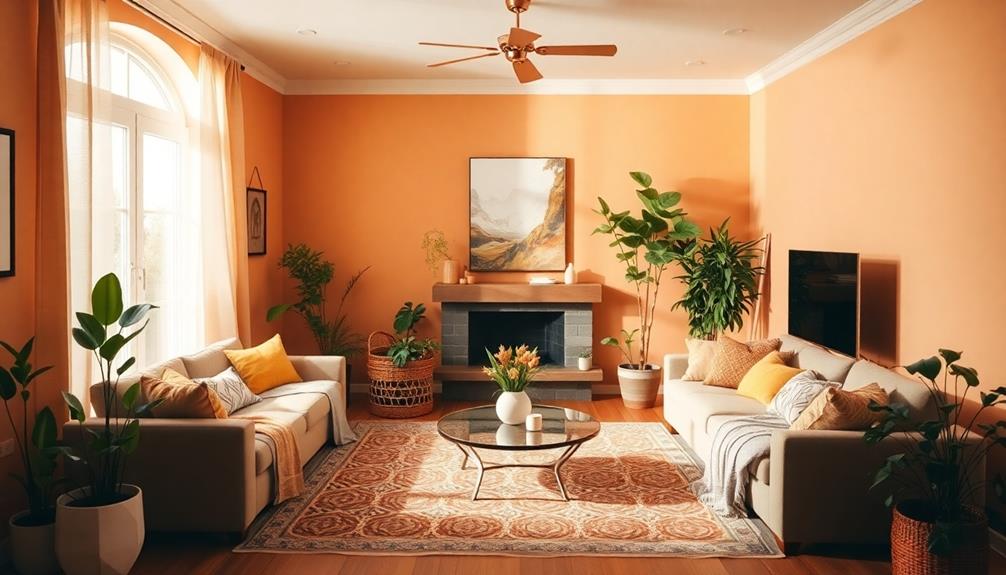
Embracing warm colors like red, orange, and yellow can greatly uplift the energy in your home. These hues are known to boost energy levels, creating a lively atmosphere perfect for social interactions. They transform spaces like living rooms and kitchens into inviting areas that encourage connection and engagement.
| Color | Effects |
|---|---|
| Red | Symbolizes luck, wealth, and prosperity; enhances excitement when used in moderation. |
| Orange | Encourages conversation and connection, providing grounding effects through decor. |
| Yellow | Promotes health and well-being, brightening spaces, especially those lacking natural light. |
Benefits of Cool Colors
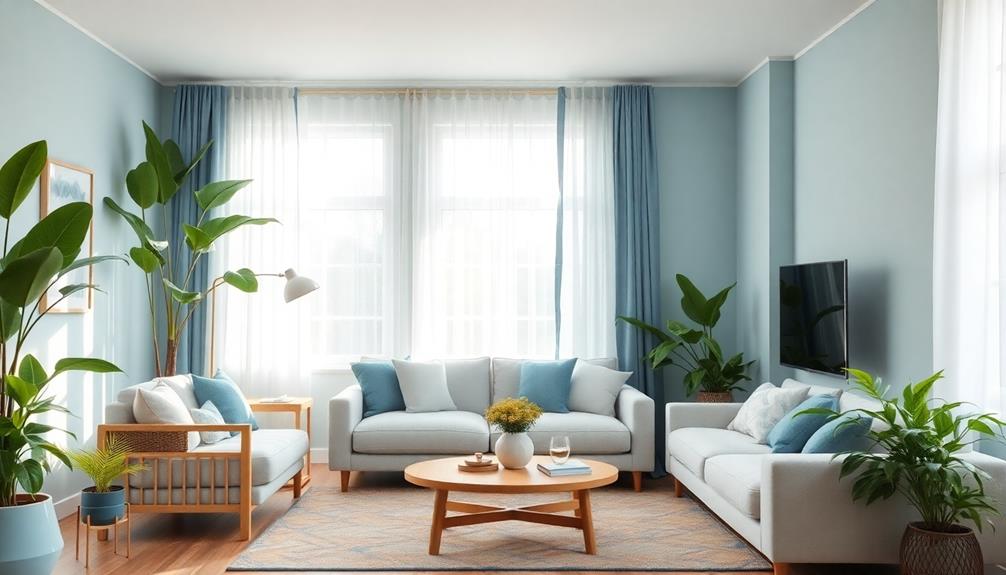
Cool colors, such as blue and green, play an essential role in creating a peaceful home atmosphere. When you incorporate these hues into your living spaces, you promote calmness and tranquility, making them perfect for bedrooms and bathrooms.
The color blue, in particular, is known for its ability to reduce anxiety and enhance focus, which can be beautifully complemented by Indonesian decorative pillows that showcase vibrant colors and intricate patterns. Imagine stepping into a serene blue room that encourages relaxation and self-reflection, helping you unwind after a long day.
Green, on the other hand, symbolizes growth and healing. It fosters a restorative environment, ideal for areas designated for rest or meditation. Adding shades of green to your decor can revitalize your space and elevate your mood.
While shades of purple can also evoke serenity, blue and green are your go-to colors for a soothing ambiance. By embracing cool colors in your home, you'll greatly reduce stress levels and promote mental well-being.
These colors foster a soothing and balanced environment, allowing you to create a sanctuary that nurtures your mind and spirit. So go ahead, paint those walls or add some cool-toned accessories for a more peaceful haven.
Balancing Colors in Your Home
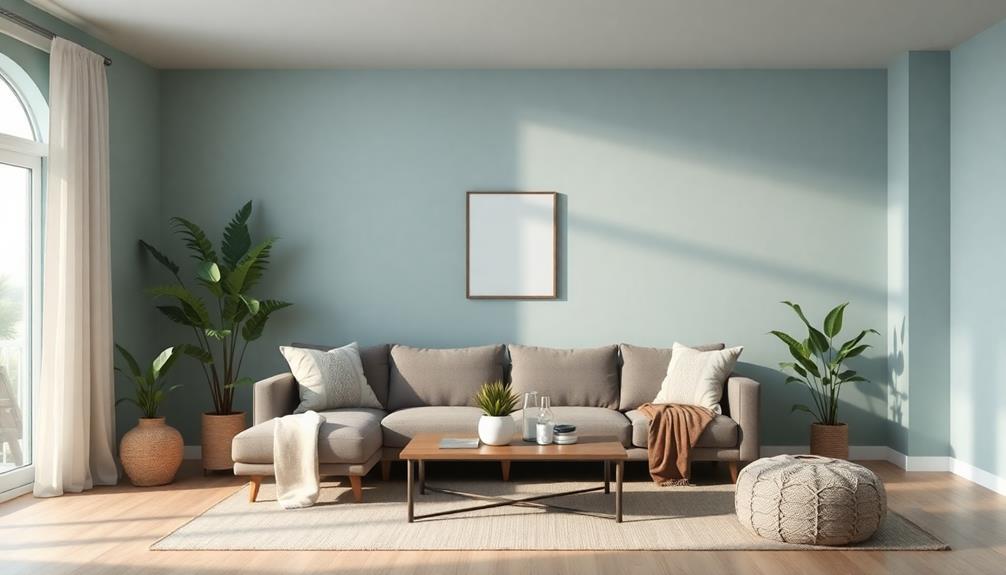
Achieving balance in your home's color scheme is essential for creating a harmonious environment. When balancing colors in your home, you prevent chaos and overwhelm, ensuring that energy flow remains positive. Too much color can lead to discomfort, while too little can dull the atmosphere.
To help you decide how to balance colors in your home, consider the following table:
| Room Type | Suggested Color Palette | Purpose |
|---|---|---|
| Living Room | Warm colors (reds, yellows) | Stimulate energy and conversation |
| Kitchen | Warm colors (oranges) | Encourage social interaction |
| Bedroom | Cool colors (blues, greens) | Promote relaxation and tranquility |
| Bathroom | Cool colors (light blues) | Enhance calmness during self-care |
| Office | Balanced mix | Inspire productivity and focus |
Practical Tips for Color Application

When selecting colors for your home, it's important to contemplate how each hue impacts the atmosphere and energy of your space.
For your living room, opt for warm Feng shui colors like red, orange, and yellow. These shades foster an inviting atmosphere, perfect for gatherings and socializing, especially when paired with traditional Indonesian style home decor that incorporates natural materials and intricate textiles.
In contrast, consider using cool colors like blue or green in bedrooms and meditation areas to promote relaxation and tranquility.
Be mindful of overpowering colors, such as full red in the South or blue in the North. Limit their use to no more than 1/9 of your home's space to maintain balance and prevent negative energy.
When applying colors, think about combinations that enhance your home's energy. For instance, earthy tones paired with accents of red can strengthen emotional connections in the South-West area, aligning with the earth element.
Frequently Asked Questions
What Are the Calm Colors for Feng Shui?
Calm colors for Feng Shui include soothing shades like blue, green, and lavender. These hues promote relaxation and tranquility, making your spaces feel more peaceful and balanced, which helps reduce stress and enhance overall well-being.
Which Colour Is Best for Home for Peace?
Think of your home as a tranquil sea; soft blue shades can calm your spirit. For peace, you'll find that green nurtures growth, while earthy tones ground you, creating an inviting, serene atmosphere throughout your space.
Which Color Gives Positive Energy in Home?
If you want to infuse your home with positive energy, consider using red for social spaces, green for bedrooms, or yellow for kitchens. These colors can uplift your mood and enhance interactions with family and friends.
What Colors Should Be Avoided in Feng Shui?
Ever wondered which colors might drain your energy? In Feng Shui, avoid excessive blue, black, full red, dark tones in relaxation spaces, too much green, and grey to maintain balance and harmony throughout your home.
Conclusion
In the quest for a peaceful home, you might think throwing a splash of red on the walls will ignite joy, but it could just as easily spark chaos. Embracing the calm of blues and greens might seem dull, yet they can create a vibrant serenity that breathes life into your space. So, as you dance with colors, remember: it's not about how loud you shout, but how softly your home whispers comfort and tranquility.
